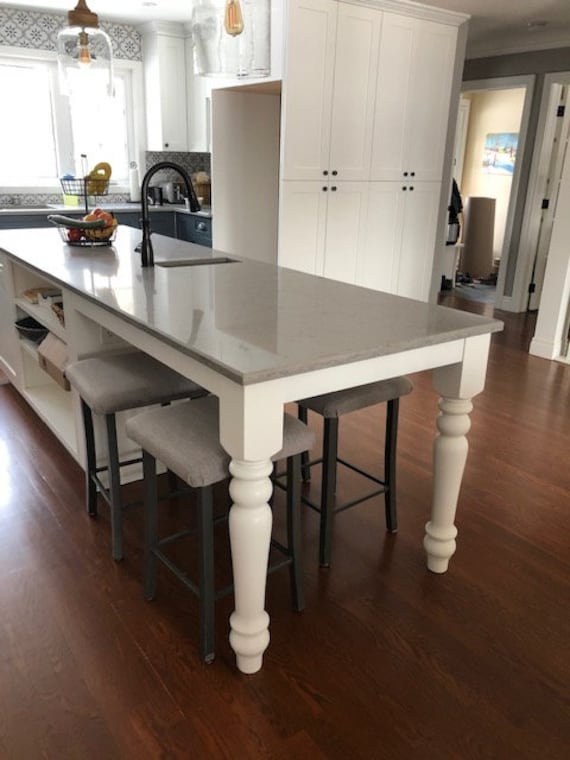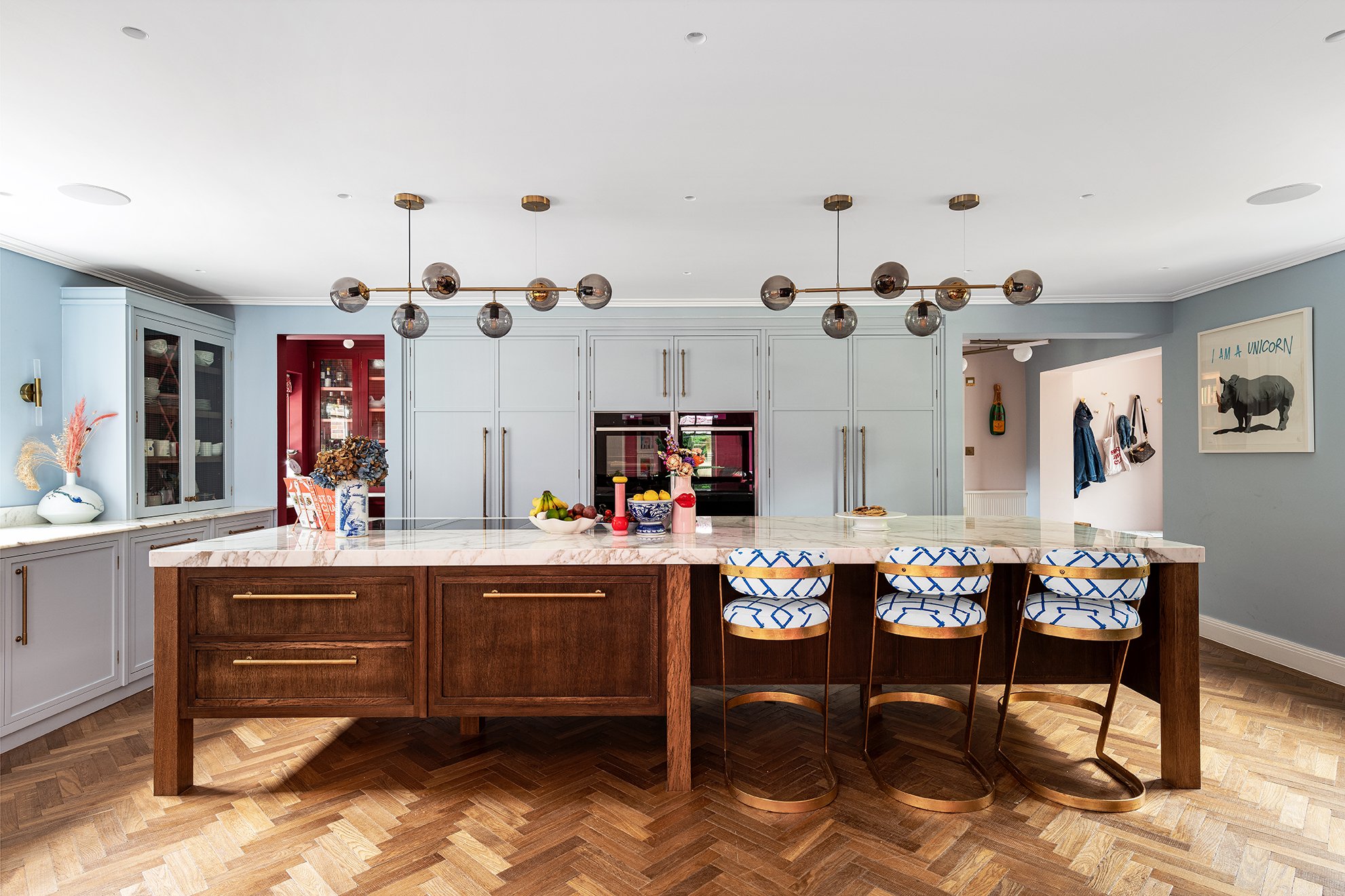Kitchen Island Legs: Enhance Your Kitchen with Solid Assistance
Kitchen Island Legs: Enhance Your Kitchen with Solid Assistance
Blog Article
Crucial Tips for Picking the Perfect Table for Your Cooking Area
Picking the ideal dining table for your kitchen is even more than simply an issue of taste; it necessitates a complete understanding of your area and requirements. The shape of the table plays a pivotal duty; while rectangle-shaped tables suit bigger areas, round ones foster affection, and extendable alternatives offer flexibility. The table ought to integrate with your cooking area's appearances and suit your household comfortably.
Action Your Room
Choosing the optimal dining table starts with a precise evaluation of your readily available room. This foundational action makes sure that the table not just fits easily within the space however additionally enhances the overall layout and capability of your eating area.
Take into consideration the flow of movement around the table. It is important to leave appropriate space for chairs to be taken out and for people to relocate around the table without blockage. A general guideline is to permit at the very least 36 inches of clearance from the side of the table to the local wall or furniture piece. This ensures convenience of accessibility and comfort during dishes.
Additionally, think of the variety of people you usually entertain and whether you require added space for visitors. Choosing an extendable table can provide versatility, allowing you to suit varying varieties of restaurants. By accurately gauging your space, you prepared for choosing an eating table that boosts both the aesthetics and functionality of your eating area.
Choose the Right Forming

On the other hand, round tables are exceptional for smaller kitchen areas or intimate celebrations, as they promote discussion by enabling everyone to encounter each other. They also supply a sense of comfort and can fit well in tighter areas due to their absence of sharp edges. Oval tables provide the finest of both worlds, integrating the size of rectangular tables with the affection of round ones, making them functional for numerous setups.
Square tables are one more alternative, particularly suited for square-shaped areas. They create a modern-day and in proportion appearance, promoting an equivalent dining experience for all seated.
Material Considerations
When picking an eating table, product considerations are critical in determining the table's toughness, upkeep requirements, and overall visual. Wood is a timeless selection, supplying timeless charm and effectiveness.
Glass-topped tables offer a contemporary, smooth look and can make a room show up larger as a result of their openness. Nevertheless, they need frequent cleaning to avoid fingerprints and smudges. Additionally, solidified glass is suggested for its extra strength and safety.

Lastly, composite materials like MDF (Medium-Density Fiber board) or plywood are affordable choices. These products can resemble the look of solid wood but may not offer the same longevity. They are usually easier to tidy however can be prone to water damages if not appropriately sealed.
Inevitably, the choice of material ought to straighten with your kitchen's design, your way of living requires, and your budget plan constraints. (kitchen island legs)
Seats Capacity and Comfort
Exactly how do you figure out the ideal seats capacity and comfort for your table? This important step includes assessing both the physical room available in your kitchen area and your home's practical needs. Begin by gauging your kitchen area to guarantee the table fits easily, enabling a minimum of 36 inches of clearance around it for simple motion. Think about the number of individuals who normally eat with each other, as this will affect the table dimension. For a family members of four, a rectangle-shaped table of 48 inches long or a round table with a 48-inch diameter is usually adequate.
Convenience is similarly important. The height of the table must ideally be around 30 inches, supplying a balanced ergonomic position for seated restaurants. Chairs should have a seat elevation of 18 to 20 inches to make sure a comfy eating posture. In addition, consider the her response chair style; upholstered seats and encouraging back-rests can improve dining convenience considerably, especially during prolonged meals.
Design and Visual Appeal
Picking a dining table that matches your style and aesthetic appeal includes balancing personal preference with the existing decoration of your dining room. The eating table is frequently the focal point of the kitchen area, and its design should enhance the overall motif of the room. Whether your kitchen boasts a modern-day, minimal appearance or a rustic, farmhouse charm, the table you choose should harmonize with these components to create a cohesive and inviting atmosphere.
Take into consideration products carefully; timber offers an ageless charm and can range from rich mahogany for a typical aim to lighter oak for a modern feel. Metal and glass tables, on the other hand, can present a smooth, industrial edge to your cooking area. Do not neglect the table's shape-- rectangular tables are functional and traditional, while visit our website round and oval options can promote a more intimate dining experience.
Furthermore, pay attention to finishes and information. A troubled finish may include personality and heat, whereas a shiny surface can contribute to a tidy, contemporary visual. Ultimately, your eating table need to not just fit perfectly right into your cooking area's design however likewise show your individual design, boosting the space both functionally and aesthetically.
Final Thought
In final thought, picking the optimal table for a cooking area necessitates careful analysis of area, shape, product, seating capability, and visual consistency. Guaranteeing a minimal clearance of 36 inches promotes comfortable movement, while the choice of shape boosts spatial dynamics. Product option influences resilience and design, making it essential to align with the cooking area's general aesthetic. Ultimately, a well-chosen eating table fosters an inviting atmosphere and fits the family conveniently, therefore improving the dining experience.

When selecting an eating table, material considerations are paramount in establishing the table's sturdiness, maintenance needs, and general aesthetic. For a family of four, a rectangular table of 48 inches long or a round table with a 48-inch size is generally sufficient.
Don't overlook the table's shape-- rectangle-shaped tables are flexible and traditional, while round and oval choices can foster a much more intimate eating experience. kitchen island legs.
Report this page